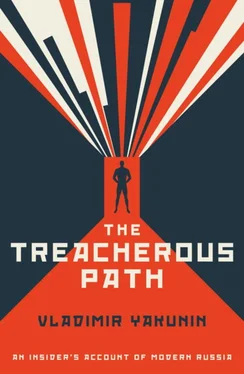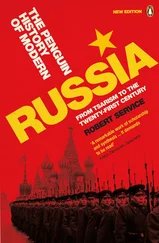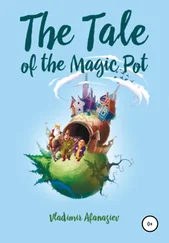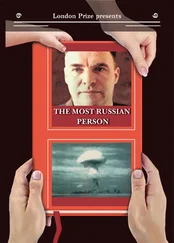Before the railways came, it used to take as long as half a year to send messages from St Petersburg to the outlying regions; disputes were often settled by the governors of those areas bordering China well before their instructions from the Tsar ever arrived. The steel tracks that began to spread across the country’s vast expanses completely changed the way people lived. Indeed, they are still changing people’s lives today – given that most cross-country flights within Russia remain relatively expensive, railways will always be a primary means of traversing it.
You could almost say that the railway system is the lifeblood of the country: it keeps people and essential goods moving and enriches every organ it touches. For a long time it was also one of the most effective ways of conveying information. There’s a story that in 1917 the only way people in far-flung regions in Russia found out that the tsar had been overthrown and that in his place a new Bolshevik regime had come to power was because the trains had a different emblem on the front.
I have read before that spiders use their webs as an extension of their brains. One might say the same of Russia and its railways. It is through our railways – and the ingenuity, bravery, skill and vision displayed by the men and women who have worked on them – that we have come to know our countrymen; they are the stitches that hold this dizzyingly vast patchwork of people and territories together.
Until you have seen its seemingly endless vistas – the tundra blanketed by six feet of winter snowfall, the swamps drowned under water deep enough to swallow a man without trace, the almost hallucinatory monotony of the birch-tree forests that line mile after mile after mile of track – pass in a blur by your carriage, you cannot begin to comprehend the overwhelming immensity of the country, or the brute-scale problems this inevitably brings in its wake. Some of these are simply a question of logistics; others are the result of the complex interplay between the landscape and the infrastructure laid atop it.
Imagine, for example, that you are contemplating organising a train to run between Moscow and Vladivostok, a journey that lasts nearly a week. The locomotive’s driver obviously cannot pilot the train for seven days without rest, so at eleven-hour intervals you have to make available some means to ensure they can be relieved.
If you were in Britain, it is likely that the rail company could simply send a taxi to pick the driver up and take them to the nearest motel. But while you do not tend to find motels, or even anything resembling them, in the middle of Siberia, your employees still need to rest and relax; perhaps most importantly, they need to eat.
So you establish special rest houses for the locomotive brigade – complete with saunas, cinemas and canteens. Then you need to start thinking about other things. At each of the rest houses someone will be tasked with checking the drivers’ mental and physical health before they begin work – they cannot be allowed to control a train if they are tired, or sick, or drunk.
And of course, it is not only the driver who needs looking after. There are no workshops capable of locomotive maintenance a hundred miles into the Siberian forest, or anywhere with a tank of sufficient capacity to contain the amounts of gas and diesel the train consumes, so, again, it is the railway system that must provide them.
Once you have built all of these facilities, you have to populate them. Which presents new challenges. Who will look after children while their parents are at work? Special kindergartens and board schools where the kids can be cared for and educated have to be established. Before you know it, you realise that the railways are responsible for supporting a hugely complex network of people and services, in which every element is closely linked; it is almost like an ecosystem: if you remove one link in the chain, then the whole structure risks falling to pieces (which is one of the reasons why every metre of railway infrastructure must be watched and maintained constantly).
You realise too that each solution presents a new problem of its own. You need to provide hospitals for the workers along the route (because none exist in the area already; Russia’s first comprehensive healthcare system, outside of the armed forces, was created by the railways), but then the hospital needs to be staffed and maintained, the doctors and nurses must be housed… the logical consequence of this is that there are a number of towns in Siberia that owe almost every aspect of their existence to the railways. (One of the great privileges I enjoyed as president of Russian Railways was the opportunity to look through the blueprints for the original Trans-Siberian route. Seeing how the architects of this great Russian endeavour had mapped out a new kind of life for every small town along the route, one complete with schools and hospitals, was an extraordinary experience. In an era when only a tiny proportion of the country was literate, and an even smaller percentage of the population had access to any kind of healthcare provision, it was an amazing, unprecedented investment in a better future. And, again, it is a tradition that persists. Even today, in some of the more far-flung areas of Russia you would struggle to find any doctor working outside of a railway hospital.)
You also have to quickly become accustomed to working in circumstances that would be unimaginable for most other Europeans. I remember a visit from the Italian Minister of Economic Development, Federica Guidi, whose brief included investment in her country’s railway system. When she arrived, we were experiencing temperatures of around -25 degrees (she was dangerously underdressed, a situation we immediately resolved by swaddling her in thick furs). As we walked around, a member of the delegation asked my people the same question three times, but even when a translator was summoned our workers could not understand what she was asking. The Italian had wanted to find out how long the severe weather would prevent Russian Railways from operating, an enquiry that had prompted two distinct types of bafflement: firstly, in a country where temperatures often fall below -50, what we were experiencing was not severe; and secondly, it was inconceivable to us that they should ever stop us going about our business. The most we would ever consider doing would be to reduce the number of carriages and the weight of the train (because in freezing conditions metal becomes brittle, to the point that it shatters if struck with a hammer) or cut the speed. Stopping the service is not an option.
And yet, of course, in addition to the problems that you can anticipate, you also have to find a way to accommodate the kind of unruly event that tumbles out of the sky and upsets all of your careful plans. A moose might wander onto the line (there is no feasible way of fencing in every segment of our 85,000km of track) or the driver might suffer a sudden attack of mental illness (in one terrifying incident, in which a disaster was only narrowly averted, a driver came to believe that God had instructed him to smash his locomotive into the next train he saw – luckily the signals we began to receive warned us so that we could turn the electricity in that sector off).
All this is, I suppose, a way of arguing that Russia’s railway system is as good a metaphor for the country as a whole as any other. The product of a very particular set of historical circumstances, it is at once almost inconceivably huge and head-spinningly complex, and cannot be reduced to a simple, monolithic entity. Contained in its vastness is an array of interlinking parts trying to function as a cohesive whole in the face of circumstances (some that can be predicted, some that emerge completely unannounced) so extreme that they inevitably exert a profound and distorting influence on any attempt to operate within them.
Читать дальше












